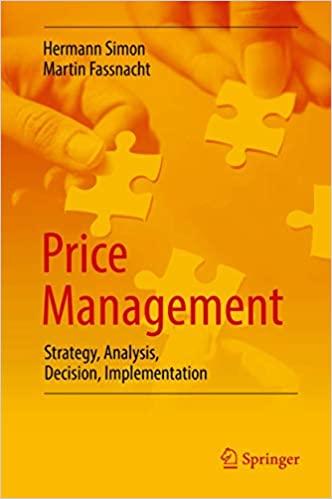Question
INTERESTS 1: NEGOTIATOR: _________________________ OTHER PARTY: _________________________ SUBJECT: _________________________ Fill in the names of the persons or groups involved in the negotiation. Put yourself as
INTERESTS 1:
NEGOTIATOR: _________________________
OTHER PARTY: _________________________
SUBJECT: _________________________
Fill in the names of the persons or groups involved in the negotiation. Put yourself as "NEGOTIATOR" and the person you are dealing with as the "OTHER PARTY".
In the spaces below, write the names of others who may be significantly affected by the outcome of the negotiation.
People on "my side" who may care about the outcome. | People on "their side" who may care about the outcome. |
Constituents? | Constituents? |
Friends? | Friends? |
Family? | Family? |
Boss? | Boss? |
Other? | Other? |
INTERESTS 2:
NEGOTIATOR: _________________________
OTHER PARTY: _________________________
SUBJECT: _________________________
Mine What do I care about? | Theirs If I were in their shoes, what would I care or worry about? | Others What are the concerns of others who may be significantly affected? |
Personal | Personal | Other 1: |
Business | Business | Other 2: |
| Other 3: |
INTERESTS 3:
NEGOTIATOR: _________________________
OTHER PARTY: _________________________
SUBJECT: _________________________
In the left-hand column, list the more important interests for you and your counterpart that you identified on the INTERESTS 2 form. For each of these, ask yourself "why?" and "for what purpose?". If you discover deeper interests, list them in the second column. Finally, try to rate your own interests by allocating 100 points among them in proportion to their relative importance.
Important Interests (from INTERESTS 2) | Basic or underlying interests (Ask yourself "why?" and "for what purpose?") | Relative Importance (Allocate 100 points) |
MINE: | ||
THEIRS: |
OPTIONS 1: Create Options to Meet Interests
NEGOTIATOR: _________________________
OTHER PARTY: _________________________
SUBJECT: _________________________
Look at your INTERESTS 3 form, then list possible ways to meet the interests on both sides. (List interests in order of their relative importance.)
My Interests | Possible options | Their interests |
OPTIONS 2: Find Ways to Maximise Joint Gains
NEGOTIATOR: _________________________
OTHER PARTY: _________________________
SUBJECT: _________________________
Consider ways to combine skills and resources to satisfy key interests on both sides.
| Inventory of skills and resources | Combine similar resources to produce value | Combine different resources to produce value | |
Me | |||
Them |
ALTERNATIVES 1:
Think of My Alternatives to a Negotiated Agreement
NEGOTIATOR: _________________________
OTHER PARTY: _________________________
SUBJECT: _________________________
My Key Interests
What could I do to satisfy my interests if we do not reach an agreement?
| Possible Alternatives | Pros | Cons |
ALTERNATIVES 2:Select and Improve My BATNA
NEGOTIATOR: _________________________
OTHER PARTY: _________________________
SUBJECT: _________________________
Of my alternatives, What will I really do if no agreement is reached (My BATNA)? Why?
What can I do to improve my BATNA? (Write down concrete steps you could take to improve your BATNA even before you go into the negotiation.)
ALTERNATIVES 3:
Identify Alternatives Open to the Other Side
NEGOTIATOR: _________________________
OTHER PARTY: _________________________
SUBJECT: _________________________
Their key interests:
____________________________________________________________
What could they do to satisfy their interests if we do not reach an agreement?
| Alternatives | Pros | Cons |
ALTERNATIVES 4:Estimate their BATNA
NEGOTIATOR: _________________________
OTHER PARTY: _________________________
SUBJECT: _________________________
What would I do in their shoes? (Which of their self-help alternatives looks best for them?)
How might I legitimately make their BATNA less attractive?
| By making it harder to pursue? | By influencing their perception of how unwise or costly it might be? |

Step by Step Solution
There are 3 Steps involved in it
Step: 1

Get Instant Access to Expert-Tailored Solutions
See step-by-step solutions with expert insights and AI powered tools for academic success
Step: 2

Step: 3

Ace Your Homework with AI
Get the answers you need in no time with our AI-driven, step-by-step assistance
Get Started


